
How to Use Raspberry Pi 4: Examples, Pinouts, and Specs
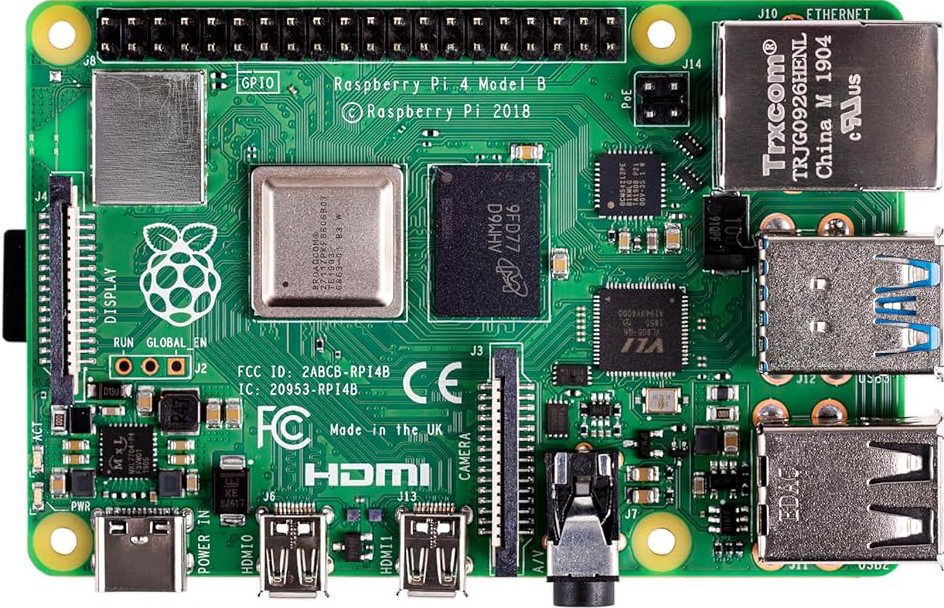
 Design with Raspberry Pi 4 in Cirkit Designer
Design with Raspberry Pi 4 in Cirkit DesignerIntroduction
The Raspberry Pi 4 (Manufacturer Part ID: RPI4-MODBP-4GB) is a compact and affordable single-board computer developed by Raspberry Pi. It features a powerful quad-core processor, multiple USB ports, dual HDMI outputs, and GPIO pins, making it a versatile platform for a wide range of applications. Whether you're building a home automation system, learning programming, or developing IoT and robotics projects, the Raspberry Pi 4 provides the performance and flexibility needed for both beginners and advanced users.
Explore Projects Built with Raspberry Pi 4
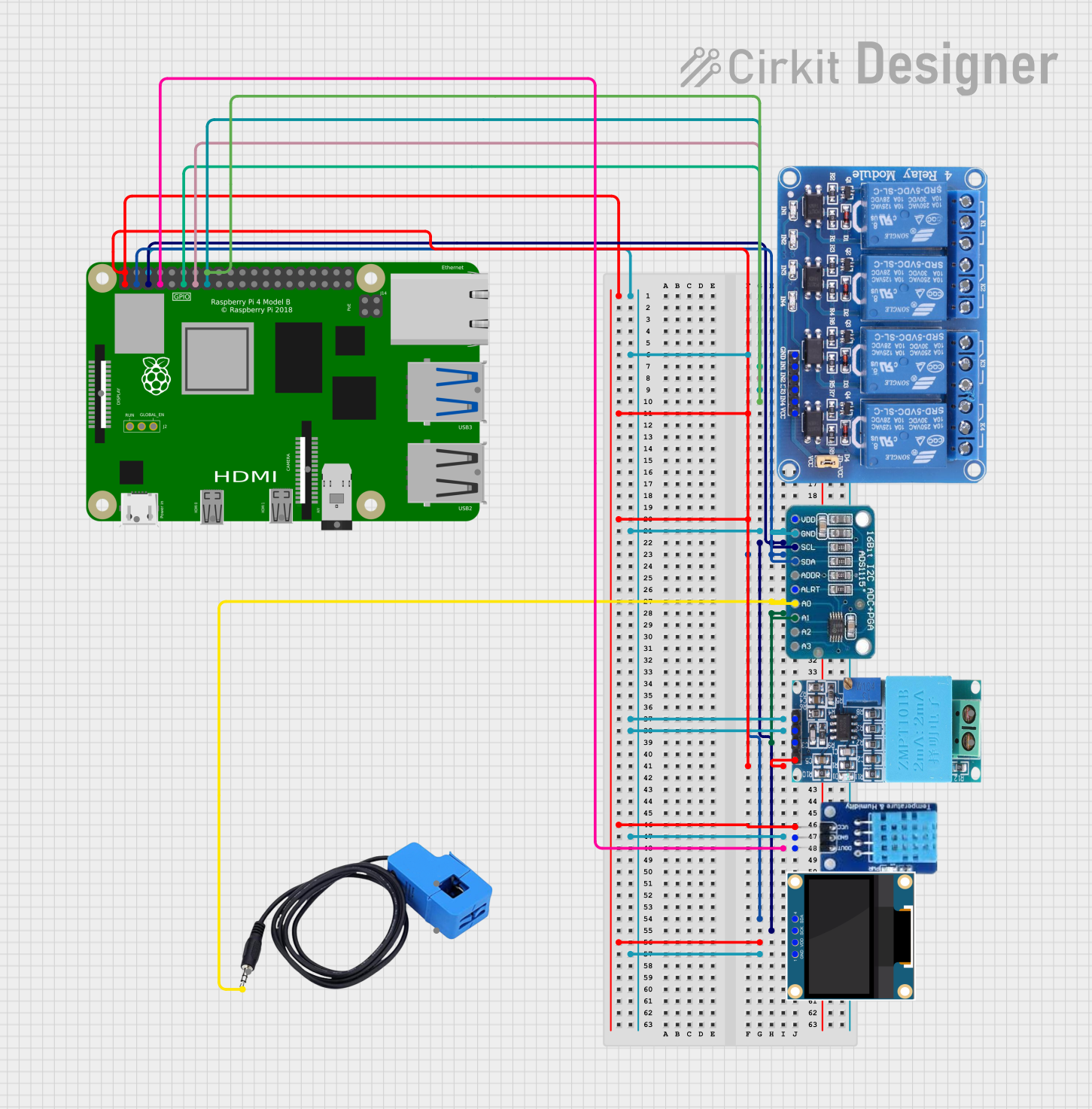
 Open Project in Cirkit Designer
Open Project in Cirkit Designer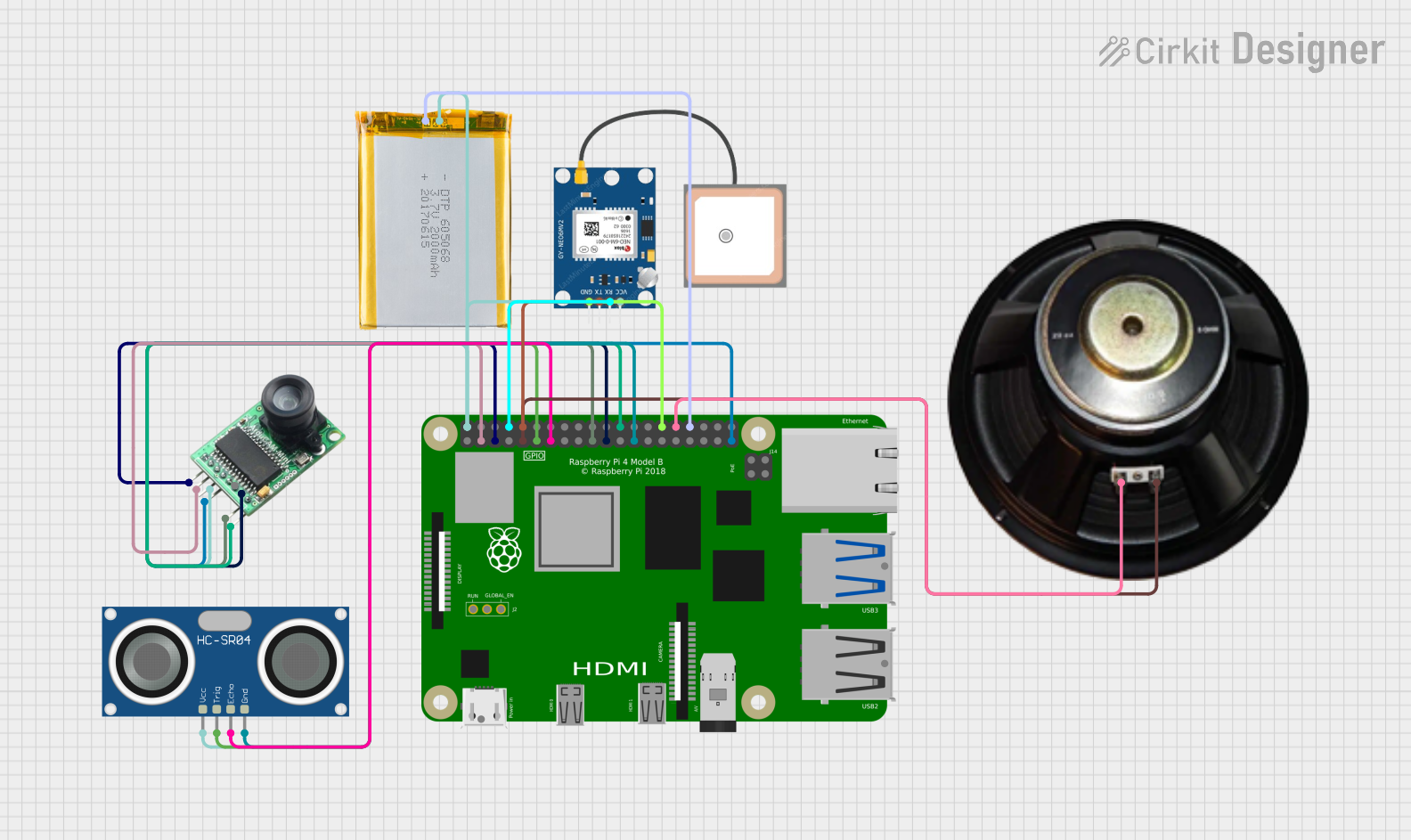
 Open Project in Cirkit Designer
Open Project in Cirkit Designer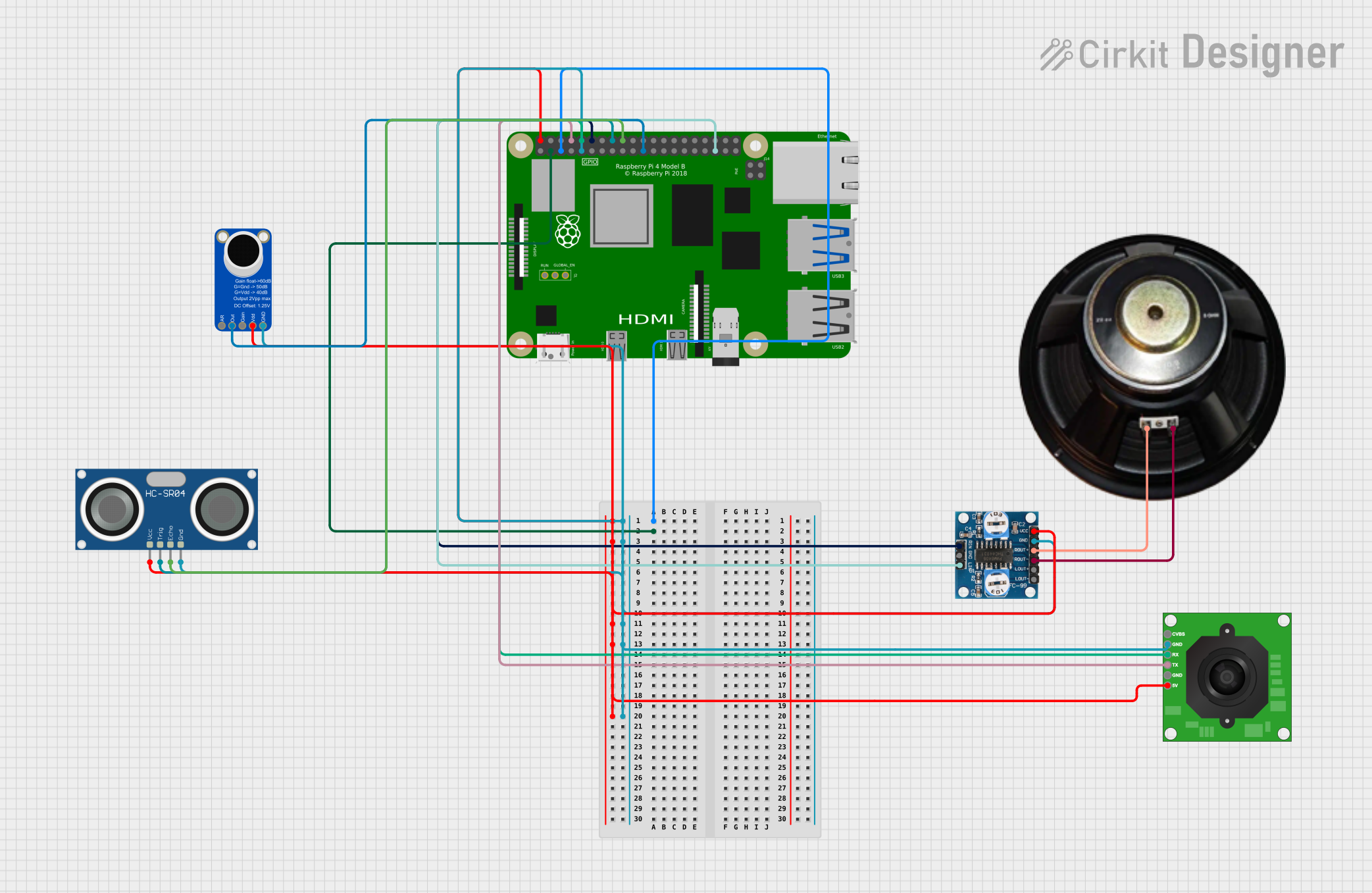
 Open Project in Cirkit Designer
Open Project in Cirkit Designer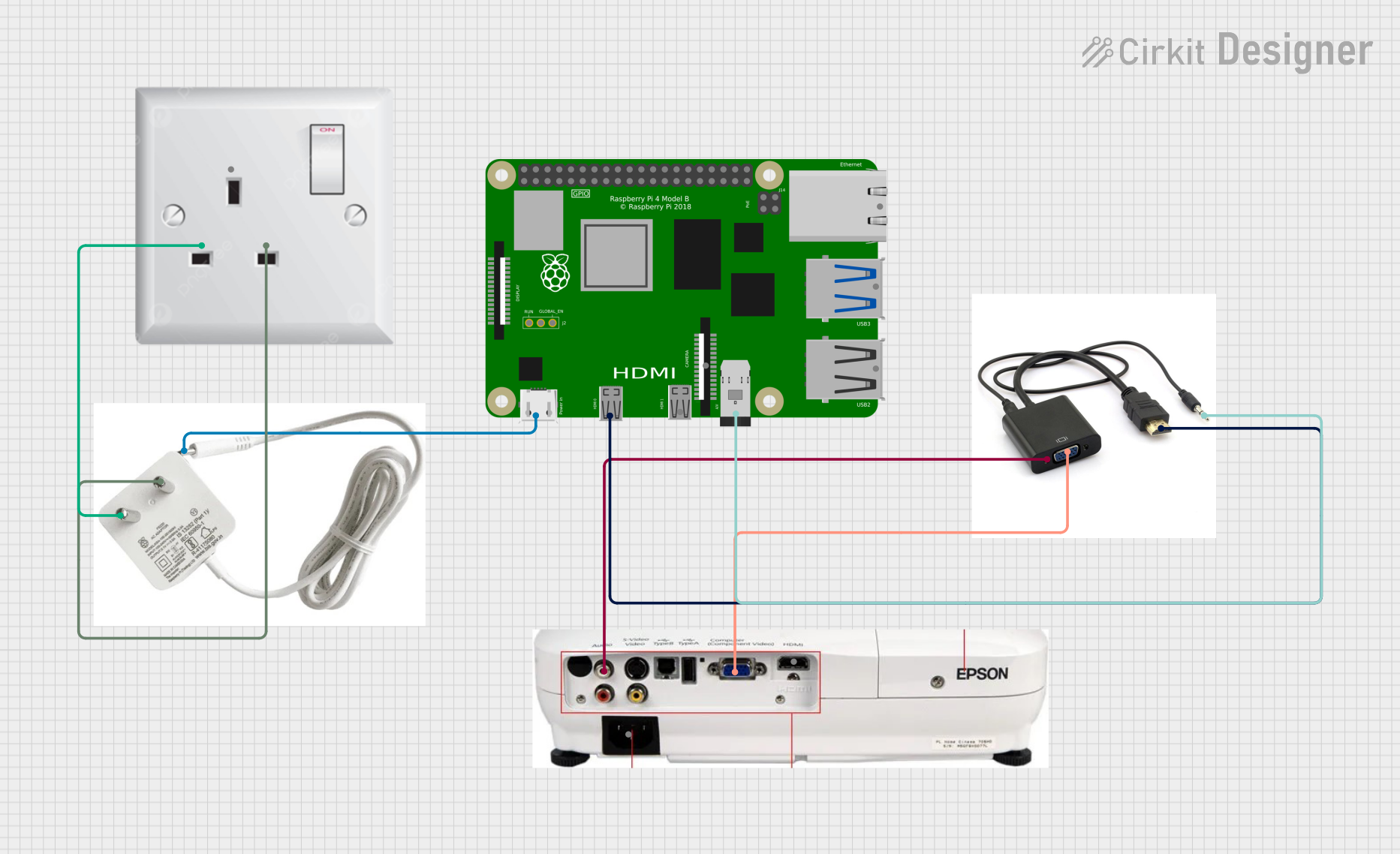
 Open Project in Cirkit Designer
Open Project in Cirkit DesignerExplore Projects Built with Raspberry Pi 4

 Open Project in Cirkit Designer
Open Project in Cirkit Designer
 Open Project in Cirkit Designer
Open Project in Cirkit Designer
 Open Project in Cirkit Designer
Open Project in Cirkit Designer
 Open Project in Cirkit Designer
Open Project in Cirkit DesignerCommon Applications and Use Cases
- Programming and Education: Ideal for learning programming languages like Python, C++, and Java.
- IoT Projects: Acts as a hub for Internet of Things devices and sensors.
- Media Center: Can be used to build a home media center with software like Kodi.
- Robotics: Interfaces with motors, sensors, and cameras for robotics projects.
- Home Automation: Controls smart devices and integrates with platforms like Home Assistant.
- Edge Computing: Performs lightweight computing tasks at the edge of networks.
Technical Specifications
Key Technical Details
| Specification | Details |
|---|---|
| Processor | Quad-core Cortex-A72 (ARM v8) 64-bit SoC @ 1.5GHz |
| RAM | 4GB LPDDR4 |
| USB Ports | 2 × USB 3.0, 2 × USB 2.0 |
| HDMI Outputs | 2 × Micro HDMI (supports up to 4K resolution) |
| Ethernet | Gigabit Ethernet |
| Wireless Connectivity | Dual-band 802.11ac Wi-Fi, Bluetooth 5.0 |
| GPIO Pins | 40-pin header (3.3V logic, supports I2C, SPI, UART, and more) |
| Power Supply | 5V/3A via USB-C or GPIO header |
| Storage | MicroSD card slot (supports booting and storage) |
| Dimensions | 85.6mm × 56.5mm × 17mm |
| Operating System | Raspberry Pi OS (default), supports other Linux-based OS and third-party OS |
Pin Configuration and Descriptions
The Raspberry Pi 4 features a 40-pin GPIO header for interfacing with external components. Below is the pinout:
| Pin Number | Pin Name | Description |
|---|---|---|
| 1 | 3.3V | Power supply (3.3V) |
| 2 | 5V | Power supply (5V) |
| 3 | GPIO2 (SDA1) | I2C Data Line |
| 4 | 5V | Power supply (5V) |
| 5 | GPIO3 (SCL1) | I2C Clock Line |
| 6 | GND | Ground |
| 7 | GPIO4 | General Purpose I/O |
| 8 | GPIO14 (TXD) | UART Transmit |
| 9 | GND | Ground |
| 10 | GPIO15 (RXD) | UART Receive |
| ... | ... | ... (Refer to official pinout) |
For the full GPIO pinout, refer to the official Raspberry Pi documentation.
Usage Instructions
How to Use the Raspberry Pi 4 in a Circuit
Powering the Raspberry Pi:
- Use a 5V/3A USB-C power supply to power the Raspberry Pi 4.
- Alternatively, power it via the GPIO header (pins 2 and 6 for 5V and GND, respectively).
Connecting Peripherals:
- Attach a monitor via the micro HDMI ports.
- Connect a keyboard and mouse to the USB ports.
- Insert a microSD card with the operating system installed.
Using GPIO Pins:
- Use the GPIO pins to interface with sensors, LEDs, motors, and other components.
- Libraries like
RPi.GPIOorgpiozeroin Python can be used to control the GPIO pins.
Networking:
- Connect to the internet via Ethernet or Wi-Fi.
- Use SSH to remotely access the Raspberry Pi.
Important Considerations and Best Practices
- Cooling: The Raspberry Pi 4 can get hot under heavy loads. Use a heatsink or fan for cooling.
- Power Supply: Ensure a stable 5V/3A power supply to avoid performance issues.
- Static Protection: Handle the board carefully to avoid static damage to components.
- GPIO Voltage: The GPIO pins operate at 3.3V logic. Avoid connecting 5V signals directly to GPIO pins.
Example: Blinking an LED with GPIO
Below is an example of how to blink an LED connected to GPIO pin 17 using Python:
Import necessary libraries
import RPi.GPIO as GPIO # Library to control GPIO pins import time # Library for time delays
Pin configuration
LED_PIN = 17 # GPIO pin where the LED is connected
GPIO setup
GPIO.setmode(GPIO.BCM) # Use Broadcom pin numbering GPIO.setup(LED_PIN, GPIO.OUT) # Set LED_PIN as an output pin
try: while True: GPIO.output(LED_PIN, GPIO.HIGH) # Turn LED on time.sleep(1) # Wait for 1 second GPIO.output(LED_PIN, GPIO.LOW) # Turn LED off time.sleep(1) # Wait for 1 second except KeyboardInterrupt: # Clean up GPIO settings on exit GPIO.cleanup()
---
Troubleshooting and FAQs
Common Issues and Solutions
The Raspberry Pi does not boot:
- Ensure the microSD card is properly inserted and contains a valid operating system.
- Check the power supply for sufficient voltage and current.
Overheating:
- Use a heatsink or fan to cool the Raspberry Pi.
- Avoid placing the board in an enclosed space without ventilation.
No display on the monitor:
- Verify the HDMI cable and monitor compatibility.
- Ensure the correct HDMI port is used (HDMI0 is the primary port).
- Check the
config.txtfile on the microSD card for display settings.
GPIO pins not working:
- Ensure the correct pin numbering mode (
BCMorBOARD) is used in the code. - Check for loose connections or incorrect wiring.
- Ensure the correct pin numbering mode (
FAQs
Can I power the Raspberry Pi 4 via USB ports?
No, the USB ports are for peripherals only. Use the USB-C port or GPIO header for power.What operating systems are supported?
The Raspberry Pi 4 supports Raspberry Pi OS, Ubuntu, and other Linux-based distributions. It can also run lightweight third-party OS like RetroPie for gaming.Can I connect 5V devices to GPIO pins?
No, the GPIO pins operate at 3.3V logic. Use a level shifter to interface with 5V devices.How do I reset the Raspberry Pi?
Disconnect and reconnect the power supply to perform a reset.
This documentation provides a comprehensive guide to using the Raspberry Pi 4 effectively. For further details, refer to the official Raspberry Pi website.